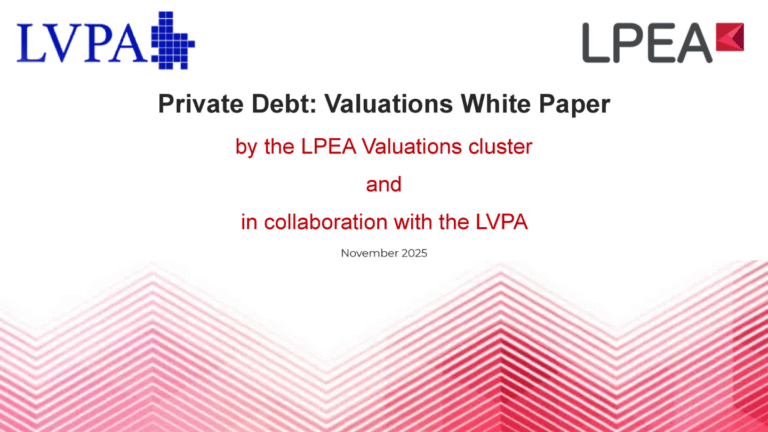By Silke Bernard, Partner and Mariusz Wiese, Managing Associate at Linklaters
On 19 July 2024, the European Commission adopted the Commission Delegated Regulation supplementing the ELTIF Regulation (the “ELTIF CDR“), thereby finalizing the long-awaited regulatory technical standards for European long-term investment funds (ELTIFs) under the revamped ELTIF 2.0 framework. Despite some delays and what could be described as a legislative thriller, the outcomes are perceived as a successful reconciliation of the needs for flexibility given the large variety of conceivable ELTIF strategies and the key principles of retail investor protection that are central to the ELTIF label.
We anticipate that the market will welcome the final text with satisfaction, especially since some of the more stringent (“one-size-fits-all”) provisions that were proposed during the consultation were replaced by measured rules that allow for adjustment to individual strategies. Although sponsors are still navigating the operational nuances, the initial feedback has been very encouraging. While ensuring an adequate level of consistency, the EU Commission provided more flexibility to the sponsors, allowing them to more accurately meet their investors’ expectations and needs.
The European Commission has once again proven its commitment to making the revamped ELTIF label a success. This success is vital for not only supporting an economy in dire need of financing but also offering individual investors attractive investment opportunities.
Inside the ELTIF CDR
The ELTIF CDR supplements the ELTIF Regulation with technical standards governing key aspects of ELTIF operations. This is particularly important for open-ended ELTIFs, which are one of the big developments under the ELTIF 2.0 revamp. Over recent months, discussions around liquidity and redemption policies have been intense, with uncertainties around the final rules making it more complex to launch evergreen ELTIFs. Interest in the newly introduced matching mechanism is now anticipated to grow as well.
The ELTIF CDR also incorporates into one single text the retained and well-established provisions from ELTIF 1.0 RTS making it easier for the sponsors to track the applicable rules around the use of derivatives, assessment of the market for potential buyers or valuation criteria for the assets to be divested.
Focus on Liquidity
Ensuring that retail investors have a realistic option to exit an open-ended ELTIF while adequately protecting those remaining in the vehicle was a central focus for the European legislator. The ELTIF CDR introduces clear and detailed criteria for minimum liquidity requirements. The maximum percentage of ELTIF’s liquid assets available for redemption will be determined either (i) based on a minimum notice period and redemption frequency or (ii) with reference to the redemption frequency and the minimum overall percentage of liquid assets an ELTIF must invest in. This choice between two separate mechanisms should allow market players to select the most suitable option for their investment activities and investor expectations.
The ELTIF CDR further sets out the minimum information that ELTIF managers must provide to competent authorities and investors. The redemption policy must include details ranging from redemption frequency and timing limits to gating and liquidity management tools.
There will be no mandatory minimum holding period. Instead, the EU Commission gives ELTIF managers the discretion to determine whether a minimum holding period is appropriate for their strategy and provides criteria and guidelines they should consider. This outcome should be particularly welcomed by sponsors offering more liquid strategies and aligns with investor demand. In a similar way, an arbitrary minimum redemption notice period was removed from the ELTIF CDR, giving sponsors more flexibility to determine an appropriate timeframe for redemptions.
You Have a Match!
Matching transfer requests is a new feature under ELTIF 2.0. While the level 1 regulation provides for generic rules, the ELTIF CDR now clarifies the content of the matching policy and the obligations ELTIFs offering this option to investors must comply with. The legislator has focused on mandatory disclosure of information, determination of execution price and fees, and fair treatment of investors.
One significant change in the ELTIF CDR compared to the draft proposal is the removal of the obligation to include the various details of the redemption policy and matching policy in the instruments of incorporation of an ELTIF, leaving it open where such details are disclosed. This change reflects the variety of legal frameworks and local rules (e.g. in a Luxembourg umbrella set-up, it is impossible to provide granular redemption and matching details for various different sub-funds in the umbrella articles of incorporation). The removal of this requirement provides sponsors with more flexibility in determining the most appropriate documents for setting out their policies and mandatory disclosures.
With these rules clarified, we expect a larger uptake of the matching mechanism, especially when alternative sources of liquidity become compelling for retail investors.
How Much Does It Cost?
The final Article of ELTIF CDR aims to ensure that all relevant costs are transparently defined, consistently calculated, and uniformly presented, providing clarity for investors. It allocates the most common costs and charges of an ELTIF into pre-determined sub-categories to make comparisons between different vehicles easier for investors.
Further clarifications are provided on the calculation of the overall cost ratio, a topic that has raised many practical questions under the previous version of the ELTIF Regulation. The EU Commission did not endorse ESMA’s proposal to use a table format for template cost disclosure, instead allowing asset managers the flexibility to present various costs and charges in the most investor-friendly manner.
What Comes Next?
We are nearing the finish line, but a few formalities remain before the ELTIF CDR will be fully implemented. Following its adoption by the Commission, the regulation will now undergo the normal legislative scrutiny period by the European Parliament and the Council. If, as expected, no objections are raised, the ELTIF CDR will be published in the Official Journal and will take effect the following day, which is expected to happen in Q4 2024. The first possible date on which the European Parliament could adopt the text is in mid-September 2024. Given the long period of legislative dialogue and back and forth, the industry would be surprised if the texts were not adopted as now presented. Therefore, one may legitimately expect actors to start integrating the new rules and structuring their ELTIF governance accordingly, which we would expect regulators to see with a positive eye. It is truly important that people now have clarity and can move ahead with their projects, with a satisfactory level of legal certainty.
CSSF Accelerates ELTIF Approval Times
In a remarkable shift that has been warmly welcomed by asset managers, the Luxembourg financial regulator, the Commission de Surveillance du Secteur Financier (CSSF), has significantly improved its response and approval times for ELTIF approvals. This positive development highlights CSSF’s understanding of the critical importance of time to market in the dynamic financial landscape. It plays an essential role in planning successful fundraising activities for regulated vehicles.
Luxembourg’s efforts to maintain its competitiveness against other financial markets are clearly evidenced in CSSF’s recent endeavours. The national competent authorities across various jurisdictions have increasingly marketed swift regulatory approvals as a commercial advantage, and CSSF is not staying behind. Market players have observed that comments and approvals on standard ELTIF filings now regularly arrive within a few days. Even more complex filings are often resolved at an unprecedented pace, reflecting CSSF’s dedication to expediting processes effectively. This is particularly noteworthy given the recent increase in the number of ELTIF approvals, showcasing CSSF’s ability to adapt to evolving market trends.
The impact of these advancements is tangible and widely appreciated within the financial community. By enhancing its efficiency, CSSF reaffirms Luxembourg’s commitment to being an attractive hub for asset managers, ensuring that regulatory processes do not become a bottleneck in their strategic operations. This proactive approach not only strengthens investor confidence in Luxembourg’s regulatory framework but also positions the country as a foremost destination for fund activities.
We trust this positive trend will continue and further support the overall business environment. The dialogue between the market players and the financial regulator is key to providing attractive products to investors around the globe.
Reach out to authors should you have any questions on the published ELTIF CDR.
Full text of ELTIF CDR can be found here [Register of Commission Documents – C(2024)4991 (europa.eu)]




